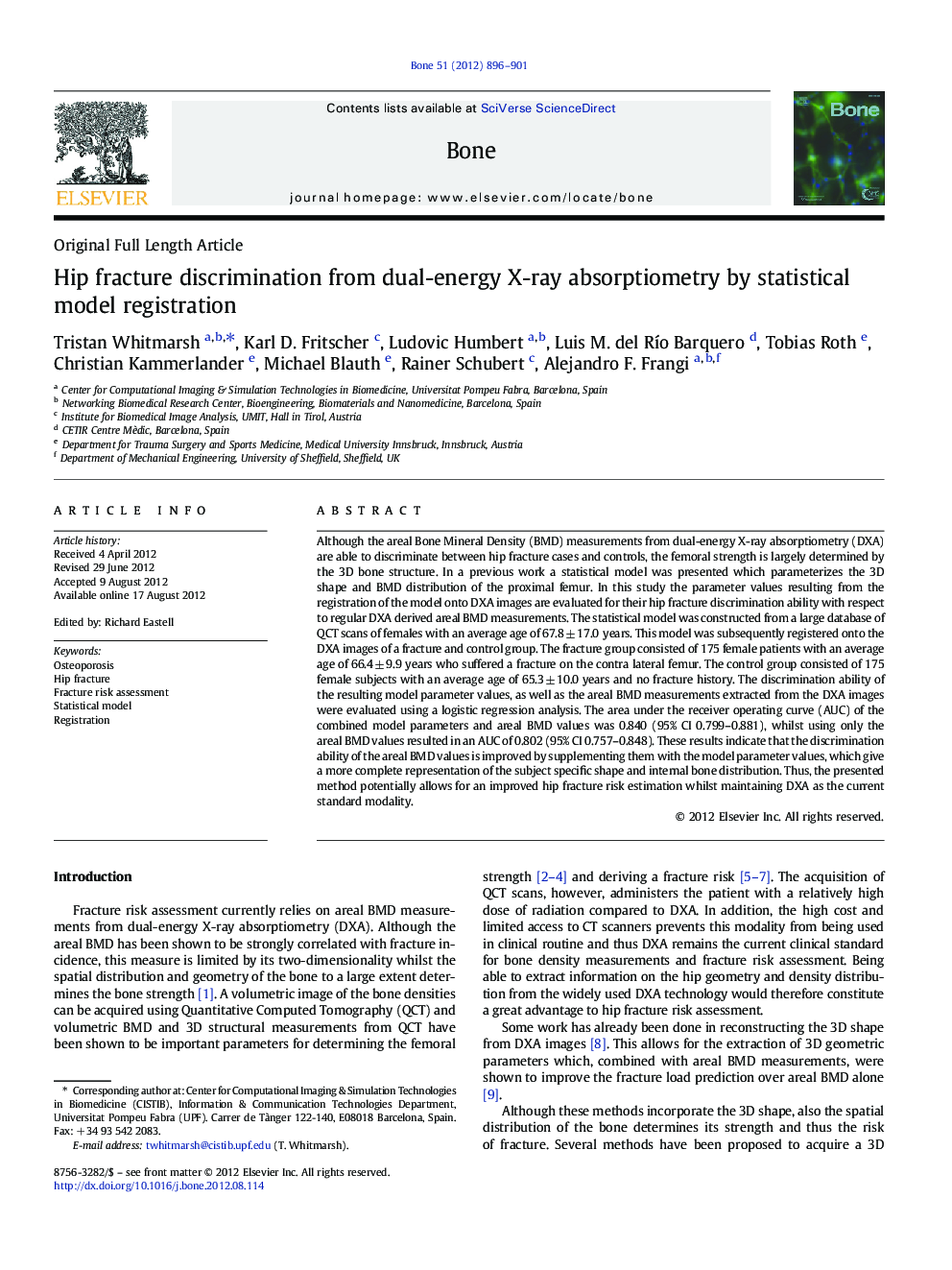| کد مقاله | کد نشریه | سال انتشار | مقاله انگلیسی | نسخه تمام متن |
|---|---|---|---|---|
| 2779372 | 1153270 | 2012 | 6 صفحه PDF | دانلود رایگان |

Although the areal Bone Mineral Density (BMD) measurements from dual-energy X-ray absorptiometry (DXA) are able to discriminate between hip fracture cases and controls, the femoral strength is largely determined by the 3D bone structure. In a previous work a statistical model was presented which parameterizes the 3D shape and BMD distribution of the proximal femur. In this study the parameter values resulting from the registration of the model onto DXA images are evaluated for their hip fracture discrimination ability with respect to regular DXA derived areal BMD measurements. The statistical model was constructed from a large database of QCT scans of females with an average age of 67.8 ± 17.0 years. This model was subsequently registered onto the DXA images of a fracture and control group. The fracture group consisted of 175 female patients with an average age of 66.4 ± 9.9 years who suffered a fracture on the contra lateral femur. The control group consisted of 175 female subjects with an average age of 65.3 ± 10.0 years and no fracture history. The discrimination ability of the resulting model parameter values, as well as the areal BMD measurements extracted from the DXA images were evaluated using a logistic regression analysis. The area under the receiver operating curve (AUC) of the combined model parameters and areal BMD values was 0.840 (95% CI 0.799–0.881), whilst using only the areal BMD values resulted in an AUC of 0.802 (95% CI 0.757–0.848). These results indicate that the discrimination ability of the areal BMD values is improved by supplementing them with the model parameter values, which give a more complete representation of the subject specific shape and internal bone distribution. Thus, the presented method potentially allows for an improved hip fracture risk estimation whilst maintaining DXA as the current standard modality.
► A method for improving the hip fracture risk estimation from DXA is proposed.
► The proximal femur is reconstructed from a DXA image using the registration of a statistical model.
► The statistical model describes the patient specific 3D shape and BMD distribution.
► The model parameters are analyzed for their hip fracture discrimination ability with respect to regular areal BMD measurements.
► The method allows for a 3D analysis whilst maintaining DXA as the standard low radiation dose modality.
Journal: Bone - Volume 51, Issue 5, November 2012, Pages 896–901